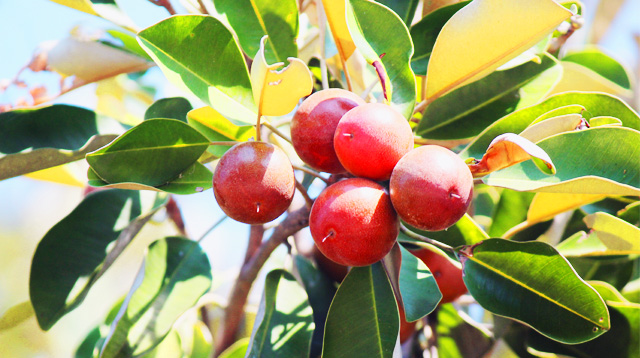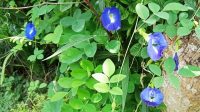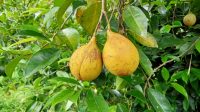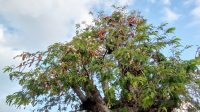- SIMILAR to tamarillo, the sawo kecik also tastes sweet and sour. People widely take advantage of this as shady and decorative plant.
- Due to its uniqeness, Bali government then adopted it as the flora icon of Bali Province
Sawo kecik (Manilkara kauki) as a fruit plant belonging to sapodila or Sapotaceae tribe has a fruit color that is different from sapodilla in general, namely reddish to orange like tamarillo or Dutch eggplants.
At first glance, the leaves do look similar to Manila sapodila. Typically, the sawo kecik tree is functioned as an ornamental plant in the homeyard or shady plant in public places such as square and roadside. Sawo kecik is very suitable to be planted in the lowlands to moderate land areas.
From a physical point of view, this sapodila tree averagely has the size with a height reaching 25 meters with a diameter of up to 100 cm. Then, the leaves are clustered at the tip of the stem. The underside of the leaves is whitish and smooth with the leaf stalks not thickening with 7 mm long petioles. Characteristics of its flower buds are oval and small with a length of about 3.7 cm and a very thin wrapping skin and easily peeled.
This plant has long conical roots that grow straight down. Then, it has many branches and these branches multiply further, so that the stem becomes stronger and stronger and produce a very wide rooting area. Thus, they can absorb more water and nutrients.
The stem is woody and round. On the surface, there are furrows clearly visible and show the supporting leaf bundles and the removal of the crust (the dead skin). The wooden bar can be used as carving materials, building materials, household furniture, keris wares and others. Meanwhile, the fruit can be eaten directly. The spread of sawo kecik in Indonesia is quite extensive covering the northern Sumatra, Java, Madura, Kangean, Bali, Sulawesi and Sumbawa.
Propagation of the sawo kecik is quite easy to do because it is resistant to disease and does not need a lot of fertilizer. It only takes about 1.5 years from seed to become a viable sapodila seedling. The ripe and orange-reddish fruit is edible and tastes sweet.
In fact, this sawo kecik has several benefits and properties such as it is very good for lowering blood pressure; maintaining eye health because it has high vitamin A content; reducing cholesterol level and facilitating to defecating as well as treating diarrhea.











